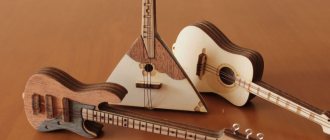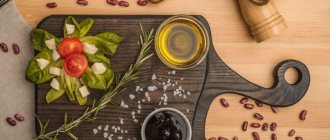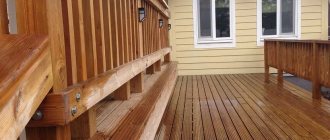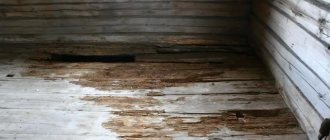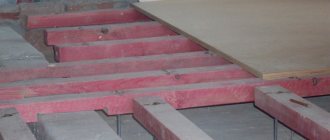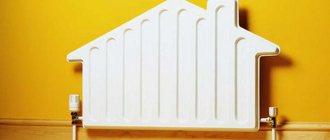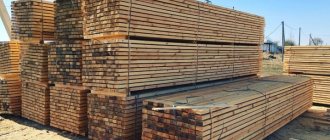A cutting board is a necessary and essential accessory. No kitchen can do without it, regardless of its purpose and specificity. The material for making a kitchen board can be sheet plastic, glass and even metal. However, the traditional option has always been wood, which is readily available, easy to work with and relatively inexpensive.
Most cutting boards are made to perform purely functional tasks - cutting food, cutting meat and poultry. There are special products for rolling out dough. Most of them are boards, cuttings of wide blocks of small thickness (usually 15-20 mm).
However, they wear out quite quickly and become covered with cuts and scratches. However, there are more practical end boards that do not have these problems. Let's take a closer look at them.
Caring for your cutting board
The end cutting board, and here we are talking about such boards, is very popular among professional chefs and ordinary people. It is made of wooden fibers located perpendicular to the cutting surface. Because of this, the knife does not become dull during frequent cutting. This cutting board is strong, but to extend its service life you need to learn how to properly care for it.
Rules for caring for end boards
Preserving the original appearance of a wood product is quite simple. You just need to follow the following recommendations:
- A dry and cool place is suitable for storing the board. Under no circumstances should it be placed next to the stove or sink.
- It is prohibited to leave the product in water or in close proximity to it. The liquid has a negative effect on the condition of the tree.
- After use, the board must be rinsed under warm water and dried with a towel.
- The product must dry naturally. Do not place it in a microwave oven, broiler, or dishwasher.
- The board should not be used as a support for hot pots or lids. Steam has a negative effect on wood fibers, and they may burst or crack.
- You should not use edible oils as a wood treatment. After a certain time, they will go rancid, which will leave an unpleasant odor on the food.
- Baking soda or mustard can be used as a disinfectant. It is better to avoid chemical compounds, as they can cause harm.
- Once a month you need to lubricate the board with a special impregnation, which you can buy in the store. It will prevent the wood fibers from drying out and extend its service life. After completing the procedure, you need to leave the product for 8 hours so that the composition has time to absorb and dry.
- The board must be processed on all sides. If this is not done, the wood may begin to bend to one side.
The tips are as simple as possible, but at the same time effective.
How to understand that an end board needs treatment with special means
Each cutting board has its own period, after which it must be treated with an oil solution. The main reason for treatment is a change in the humidity level in the room. If the vibrations are small, then nothing will happen to the wood. The situation changes when the heating season begins. Humidity suddenly becomes low, which is why the material begins to suffer.
If the following signs appear, the end board needs to be treated urgently:
- Light spots began to appear on the wood that were not there before.
- The material has lost its former color and become brighter.
- Small cracks have appeared on the sides, which can be easily felt when touched by hand.
- The main surface of the product has become rough.
- The board began to absorb liquid, although this should not have happened.
If at least one of these signs has been noticed, then you should not hesitate.
How to get rid of unpleasant odor
Unfortunately, wood tends to accumulate unpleasant odors. The aroma becomes especially pungent after onions and herring. If special remedies do not help get rid of the unpleasant odor, then you can turn to folk remedies.
Lemon
Lemon has the excellent ability to quickly destroy any odors. It is enough to take one slice and rub it on the surface of the board. After this, the wood must be washed.
Soda
To prepare the product you will need a teaspoon of water and table soda. Rub the resulting slurry onto the surface of the cutting board and then rinse with water.
Peculiarities
End boards tolerate work with any type of cutting or working tools:
Metal or ceramic knives
Kitchen hatchets (cleavers)
Meat hammers
Rolling pins
Metal dough molds
Typically, the thickness of the end boards is much greater than that of traditional products. This allows you to safely work with any tool without fear of damaging the base.
The end part of the wood absorbs water much more actively than the face. Therefore, such boards must be well impregnated with special oil. During operation, it is necessary to periodically repeat this treatment (the frequency of procedures depends on the load and the material).
However, no matter how well the board is impregnated, excessive contact with moisture is contraindicated for it. Do not leave the board in a sink filled with water. In addition, it is necessary to make legs for it so that the underside does not lie on the wet surface of the table. Otherwise, it will absorb water and bend, and it will not be possible to return it to its original state.
Another feature of end boards is their high cost. They are made from high-quality valuable wood, the technology is quite complex, processing requires the use of special equipment (or a lot of time).
End cutting boards by Ryan Hawkins
Ryan Hawkins makes many beautiful things using end-to-end technology, including end boards.
White noise board
The location of the cuts is chaotic, but some patterns can be seen.
Optical effect board
While you are cutting on such a board, you will get motion sickness.
Board "Zigzag"
Board "Brickwork"
Made from maple and sapele.
End cutting board "Wood splinters"
Advantages and disadvantages
The advantages and disadvantages of end kitchen boards include:
- full functionality, the ability to perform any kitchen tasks;
- practicality, the ability to easily carry the highest loads (up to chopping meat) without consequences for the working surface;
- long service life;
- easy maintenance, possibility of periodic surface renewal;
- no visible marks from the cutting edges of knives or other kitchen tools;
- solid, attractive appearance;
- high maintainability;
- the possibility of making it yourself from various scraps.
- difficulty in manufacturing;
- the need for periodic grinding and oil impregnation;
- high cost of finished models.
The existing shortcomings are not considered fundamentally important (if we exclude the high cost - it significantly affects demand). The main qualities are considered to be the practicality and visual appeal of end boards. They are classified as professional kitchen utensils, therefore, the attitude of users towards such products is always positive.
Born to amaze
The result is amazing. Actually, the process is very simple and not as labor-intensive as it might seem at first glance.
It’s just a pity that the hand will not rise to use such a miracle for its intended purpose.
This miracle can not only amaze friends and guests, but also give the kitchen an elegant look. Wonderful artist, great idea!
Found a violation? Report content
Frequently asked questions
What can replace factory clamps?
You can make a device in the form of a frame, the sides of which are firmly fixed to the plane. The set is placed inside it and pressed tightly with two sides, using perpendicularly installed bars. Then wedges are inserted into the gap between them and the frame and carefully hammered in, obtaining a completely dense and high-quality screed.
Can I use regular sunflower oil for impregnation?
Yes, you can. The main thing is that no technical composition is used that emits a specific odor. You can also use flaxseed oil, or purchase more refined formulations (grape seed oil, etc.) at your local pharmacy.
Will it be possible to properly sand a board using a regular rubber attachment on a drill, or will I have to buy a sander?
If you have the proper skills, you can even sand the board manually, using an ordinary block wrapped in sandpaper. The only question here is time and effort.
Which board shape is most practical and convenient?
From a material point of view, there is no difference. Here you choose based on your own ideas about working with cutting boards.
Is it necessary to tighten the board with a clamp along the side edge?
Such board models are often found. The screed helps prevent the board from coming apart due to moisture or stress. However, for the screed you will need a specially made stainless steel clamp, which is difficult to obtain. If it is possible to make it, the service life of the board can be increased to the maximum.


